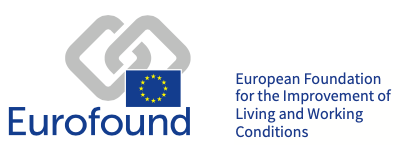What is the state of healthcare in Europe?

The “European Foundation for the Improvement of Living and Working Conditions” (Eurofound) has published the report on “Living conditions and quality of life” in Europe. EU countries spend just under 40% of their total budgets on health but never meeting the demand.
The countries of the European Union spend a large part of the tax money on social security measures. But the results are poor. For example, the countries of the European Union (EU 27) were very poorly prepared for the pandemic. They lacked not only the capacity to provide medical equipment and personnel, but also the structural capacity to respond to the pandemic. The pandemic showed an urgent need to invest in the digitalisation of social security measures. What was good, however, was the heightened sensitivity in dealing with mental illness. This complex illness grew particularly strongly during the pandemic. Nevertheless, the gap between what is needed and what is brought out to the patients is alarmingly large.
In total, there is an extreme efficiency gap. EU countries spend just under 40% of their total budgets on health but never meeting the demand. A value that is now slightly decreasing again after the pandemic.
Never meeting the demand: Difference between need and therapies
Despite the high expenditures, there is a glaring difference between the medically necessary treatments and the actual therapies. In the EU 27 more than 40 out of every 100 patients are waiting for the appropriate treatment in a clinic. Nearly 30 of 100 do not receive the necessary dental treatment. Over 20% of patients do not receive appropriate psychological care as they should. In the case of psychological treatment, the difference between what is necessary and what is available is particularly large in the 18-29 age group.
Never meeting the demand: Differences in regions and areas
The differences can also be clustered regionally. “The most deprived patients (such as vulnerable groups, ethnic minorities and rural populations) often neglected their healthcare needs, while the wealthier patients were able to seek alternatives from private providers or in other locations. In Romania, for instance, there were difficulties for people with disabilities not only in accessing health and social services but also in accessing basic necessities such as food.”:
Result: EU countries spend just under 40% of their total budgets on health but never meeting the demand. This meets our expectations and coverage from previous years
(https://vernetztesicherheit.de/arzneimittelversorgung-europa-ist-entwicklungsland/): What is the state of healthcare in Europe?Source: Eurofound (2023), Social services in Europe: Adapting to a new reality, Publications Office of the European Union, Luxembourg. The authors are: Miguel Buitrago, Renaud Scheuer, Angela Corbi, Nina Kozlowitz, Thomas Bignal and Timothy Ghilain (European Association of Service Providers for Persons with Disabilities (EASPD)) and Tadas Leončikas (Eurofound). The report can be found here:
https://euagenda.eu/publications/ef22007en: What is the state of healthcare in Europe?





